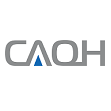Understanding the impact of CMS’ Interoperability and Patient Access Final Rule
Last spring, while much of the country was focused on other pressing national issues, the Centers for Medicare and Medicaid Services (CMS) finalized a rule that could dramatically change the way consumers, health plans and third-party app vendors manage healthcare information. Though the Interoperability and Patient Access Final Rule (the “final rule”) was cloaked in technical-speak like descriptions of APIs, FHIR resources and Implementation Guides. Make no mistake, in the coming years, it could have a profoundly positive impact on all stakeholders and consumers in our healthcare system.
So, what does this mean?
Simply put, the rule is designed to allow Americans to track their healthcare information on their mobile devices through the app of their choice. This will allow them to see their medical visits, prior authorizations, scans and lab results at any time.
And, when a consumer changes health plans, the final rule allows him or her to share this information with the new insurer — bringing much needed ease to a process that can be taxing for all parties involved.
To allow disparate systems to speak with one another, the CMS rule requires plans and app developers to use Fast Healthcare Interoperability Resource (FHIR) application programming interfaces (APIs) to share information.
How will this impact consumers?
Millions of us already use our mobile devices for banking, shopping and other everyday tasks. So, on the face of it, being able to access information from your health plan this way shouldn’t be particularly noteworthy. In healthcare, however, this is a big step forward. Until now, this kind of information sharing has not taken place — and it certainly can’t be done on a mobile app.
This may just be the first step towards the future of healthcare. In the near term, the rule will facilitate better decision-making, care coordination and, in turn, improved health outcomes. Over time, it is likely to spawn new companies, technologies and approaches that will empower and engage all of us in our own healthcare in new ways.
Is the industry ready to meet these deadlines?
And while we say kudos to the policymakers who had this vision, we also recognize that the rule’s tight timelines put a heavy burden on health plans to ensure its success. To make meeting these deadlines achievable, and for this new ecosystem to work in the long-term, one important piece is missing:
Payers and app vendors will need to be able to quickly and accurately find the digital address of the other parties that consumers want to share their health information with. Today there are more than 300,000 possible connections and, without a directory of so-called FHIR endpoints, each plan or developer would have to find, catalogue, verify and maintain these addresses on its own.
The parties involved have recognized that this is a significant challenge, and the Department of Health and Human Service’s Office of the National Coordinator for Health Information Technology (ONC) FHIR at Scale Task Force (FAST) determined an endpoint directory is needed to advance FHIR implementation.
It may be several months before consumers begin to manage their healthcare information on their phones and transfer their data from one plan to the next. However, with a trusted endpoints directory at hand, that day is drawing near, and we may just be about to enter a new era in consumer-driven healthcare.
To learn more about how we are addressing this topic, click here.
